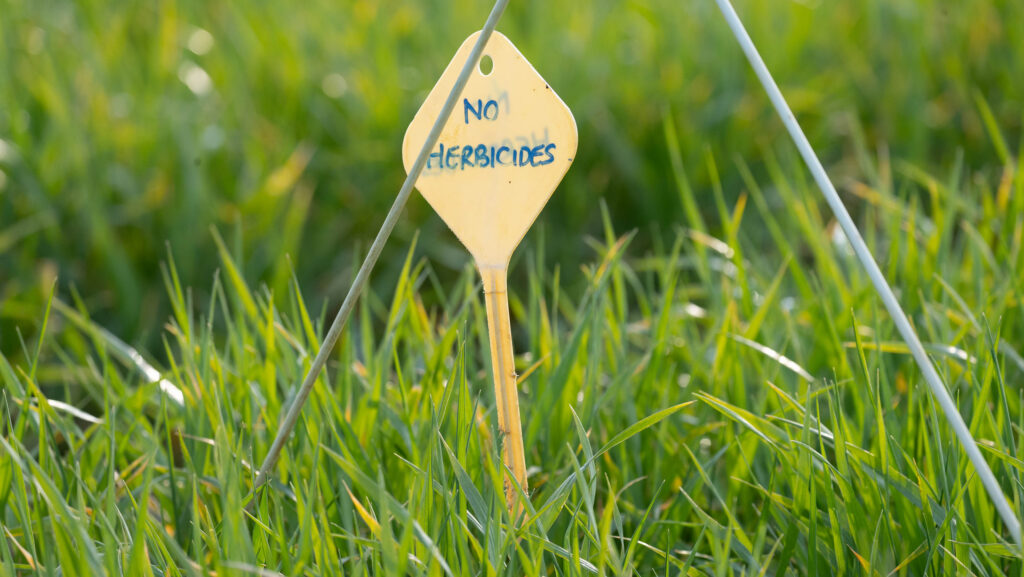Groundswell: Top tips to run an effective on-farm trial
 © Tim Scrivener
© Tim Scrivener On-farm trials are important development tools for testing new techniques or fine-tuning existing crop management approaches for farming businesses.
Whether it’s a new product, variety, idea or machine, undertaking a reliable farm trial can provide useful results specific to your farm context – without exposing the farm to unnecessary risks.
While a small tryout can be a step in the right direction for testing new approaches, a thorough investigation will provide more robust and reliable data with accurate take-home messages.
See also: Grower reveals yield and margin data from intercropping trial
Five core principles
Effective farm trials, therefore, require planning and prepping to avoid underlying variation and ensure results are representative of the trial.
Farmers Weekly looks at the five core principles when it comes to setting up an on-farm trial from Dr Jake Bishop, crop science lecturer at Reading University, and Susie Roques, research consultant at Adas.
1.Collaborate
Before running an on-farm trial, Jake recommends asking yourself: Does your question already have an answer?
“There may be farmer networks or academic institutes out there which have already answered your question.
“A good place to start is to look at farming forums such as the Farm Pep network to find out information,” he says.
When running a trial, think about whether it can be scaled up and run in more locations. Perhaps you could team up with neighbouring farmers.
There are a number of networks such as Innovative farmers, Bofin, and the Farming Innovation programme which can offer practical advice and financial support with trials.
Getting in contact with the likes of Adas, Rothamsted, Niab and university groups may also be beneficial.
2. Keep treatments simple
A control should always be included which will most likely be the farm standard.
Jake ideally recommends testing just one alternative and at most two or three in addition to avoid the risk of errors as too many treatments can reduce the opportunity for replication.
“If you don’t have replication, you may get inconclusive trial results,” noted Jake.
3. Consider underlying variation
Site selection is critical, so select a field that best represents your farm, is relevant to your goals and has minimal variation is essential.
“Use personal experience, yield and soil mapping, historic and current satellite imagery datasets to help avoid underlying variation to remove as many factors which could affect results.”
Trial measurements inform plot size and generally speaking, the larger the size, the greater the chance of variation within each plot. Long narrow plots are therefore better than short wide plots, because they minimise variability and allow for head to-head comparison.
“Aim for even fields with minimal soil type changes, but if this is difficult to achieve you could run trial perpendicular to this variation,” he said.
4. Replicate, randomise and record
Suzie noted that effective trials should feature within field replication, whole-trial repeats and replications across multiple seasons.
Randomising treatments across plots can be effective to avoid bias. “If you have two simple treatments you can just alternate which field you start on, or perhaps you could even flip a coin,” she says.
However, if a trial has three or four treatments, she recommended randomising treatments within blocks.
Furthermore, good record keeping is essential for accurate data collection. To ensure you have the right data to work with, clearly mark treatments in the field with canes or flags.
Geo-references using mobile phone apps such as What3Words can help keep a clear record of where each treatment plot is.
“Keep a clear record of the trial plan and treatment history as it can be easy to forget. Draw a trial plan and keep it safe,” she says.
5. Plan assessments at outset
Finally, consider how you will measure results. Often yield is the indicator, so how will this be assessed, for example, weighbridge or yield mapping? Take regular crop assessments to monitor disease and tiller counts etc throughout the growing season.
Arguably, the most important stage is analysing the results and drawing conclusions from the data.
Performing statistical analysis such as the Anova test can help. Research organisations such as Adas or Rothamsted can help farmers and growers with statistical analysis, which may give growers the confidence to scale up certain techniques across the farm.
If growers would like help with statistical analysis, ensure scientific collaborations are in place before the trial is set up.
Such organisations can also promote knowledge exchange with wider audiences who may have similar questions.

